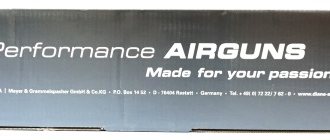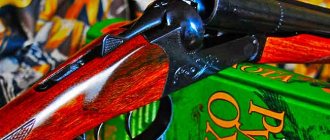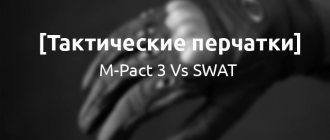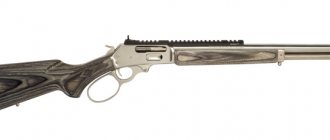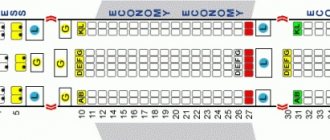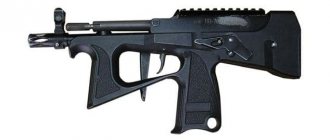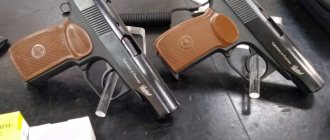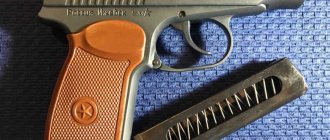(Author,
Scott Bestul,
editor of Field&Stream magazine, with a group of like-minded people, tests the most expensive models of leading manufacturers of compound bows)
Published on August 21, 2013.
The market is flooded with expensive bows and making the right choice while purchasing becomes a difficult task, especially when you want perfection.
This is the direction we will move. We will try to help you make the right choice. Field&Stream has assembled a crack team of archers for the final field testing of bows, including myself, Will Brantley, Danny Hinton, and Dave Hurteau. This year, for the Best of the Best testing, we got together and spent three days shooting with nine top bows all day long.
We grunted, we moaned, we took measurements, and we argued (then argued some more). In the end, we decided on our ratings and ranked the bows from first to ninth place.
And here are the places taken by the leaders of different companies in 2013.
For the last three years, Petersen's Hunting has awarded manufacturers with the Editor's Choice Award for best-in-class products. This award is given to products that embody the ideal combination of quality, craftsmanship, ingenuity and value. Hundreds of products are thoroughly tested by staff writers and editors in real-world conditions. Where scientific measures can be used for quantifiable results, they are. Where they can't, years of hunting experience and practical field knowledge become the yardstick. The Annual Gear Issue lists the best of the best products for over 20 categories spanning from centerfire rifles to treestands to sleeping bags. To make the cut for inclusion is a testament to a product's quality, but there can only be one Editor's Choice winner per category, so let the games begin.
Check out the winners here, and be sure to buy the Annual Gear Issue , featuring all the products tested here.
Read more: https://www.petersenshunting.com/2012/08/08/editors-choice-awards-best-gear-for-this-year/#ixzz2Cy0wlf74
Read more: https://www.petersenshunting.com/2012/08/08/editors-choice-awards-best-gear-for-this-year/#ixzz2Cxzz6Uhc
How we assessed it.
Our testing took place on one of our farms in Kentucky, where we set up targets at ranges ranging from 10 to 60 yards. Danny Hinton assembled and tuned each bow and then we shook the soul out of each one.
Testers scored each bow from 5 to 10 points in each category, for a maximum score of 100 points. When shooting, we assessed shock and vibration, balance and stop, draw curve, draw stop, fitting of parts and finishing of bows (then the authors use a term popular in the USA in describing a bow - “valley”, which is not used by Russian archers, we, as always, we do not attach such serious importance to comfort in shooting and do not pay attention to this indicator. We can define this term as the operation of the bow after the peak of the load, but below, for brevity, we will use the interlinear word “valley”), shooting qualities (including shooting accuracy and the ability to forgive mistakes), as well as the overall impression.
At the shop at Hinton Archery, we measured the speed of the bows by shooting an Easton Flatline 340 arrow with a Velocitip tip (total weight 353 grams) from each bow adjusted to 60 pounds and 3 shots. We measured the speed of the arrow and the noise of the bow and gave points from 5 to 10 accordingly. After this, the average score was displayed and the places occupied by the bows were determined.
#2 Elite Hunter - Score: 85.5 out of 100
It was one of the most enjoyable bows to shoot. We were surprised by its soft action of the eccentrics, its confident stop at the end of the stretch, and its very comfortable valley. Because it was so easy to shoot, we all hit it well and really enjoyed ourselves.
Advantages
: The bow is very quiet, almost zero vibration. The draw curve is exceptional, the stop at full draw is convincing and the appearance is pleasing.
Flaws
: The slowest bow on the list. Also, a very long valley, although convenient for shooting, can become a problem if you are delayed in hunting.
Brief conclusions
: If we had finished testing after the first day, it would have been the winner, but on the second day we measured the speed and this bow lost the lead. But, if your preference is softness and obedience, this is the bow for you.
Characteristics
: 31 1/2″ length from axle to axle
; 7 3/4″ base; 4.3 lb.; 80% let-off; 277 fps
How much does a hunting bow cost?
A good compound bow for hunting costs from 35 thousand rubles and above, but in fact, very rarely do any hunters use the basic configuration of purchased bows. As a rule, shoulders, arrows, shakos and other elements of ammunition are purchased separately, since standard options may not be of sufficient quality or convenience.
The best compound bow for hunting is determined individually by each hunter. We have listed only the basic principles for choosing the best option from which beginners can start.
Hunting with a compound bow video
A compound bow hunting video will help you get an idea of what exactly your compound bow should be like for hunting and purchase the right model.
#3 Hoyt Spyder Turbo - Score: 84.1 out of 100
Hoyt has a reputation for being a reliable bow and this bow looks quite sturdy. Just like the BowTech bow, it's hard to find any flaws in the Hoyt bow. It is fast enough for Western hunters but also quiet, which is important for whitetail deer hunters.
Advantages
: the bow became the second fastest, while being very quiet with a pleasant draw curve and a fairly long valley.
Flaws
: Hinton did not like the handle stop and he and Hurteau deducted points for the “rubber” stop of the quick release.
Brief conclusions
: where the Elite bow lost points, Hoyt gained them. Given his other advantages, he turned out to be surprisingly fast. If you want a very fast bow but don't like short valley, go to a Hoyt dealer.
Characteristics
: 34″ length from axle to axle
; 6″ base; 4.4 lb.; 80% let-off; 299 fps
Rating of the best compound bows
Compound Bow Rating 2019
Introduction
The compound bow has long been popular. Gone are the days when only Hoyt was on the market. New manufacturers have appeared, new models are appearing, but models of previous years also hold their positions. Therefore, we will try to make the most objective review of available and popular models.
We will not describe the structure of a compound bow in detail, since people who will read this rating ⎼ probably already own a compound bow, or have shot with one and have an idea about it. In general, all compound bows have a similar design. Long handle, double arms ending in eccentric blocks on which a bowstring and two cables are installed. Initially, the cables hold the shoulders and the bowstring is completely wound onto the blocks. At the moment of tension, the bowstring tightens by twisting the blocks, and they, in turn, twist the cables, storing energy. The blocks themselves come in three types.
Mono⎼eccentrics. One ordinary round block for winding the bowstring and cable and an eccentric storing the tension force at the bottom. They have a small tension release force at the end, and therefore not a very high speed. But they are quite cheap to produce and suitable for most users.
One and a half blocks⎼eccentrics. Created by Darton. The upper block is made double. This reduced the length of the bowstring and improved winding stability.
Binary blocks ⎼ invention of BowTech. The blocks became teardrop-shaped and quite large, which made it possible for the first time to achieve a shot speed of more than 300 f/s. Also, thanks to such blocks ⎼ the shot became the same and constant in speed. Also, this type of blocks makes it very easy to adjust the stretch length and even the tension force.
Most manufacturers today have been using blocks of this type for the last 10 years. Therefore, in technical terms, compound bows are almost the same. Manufacturers are coming up with new materials for handles and shoulders, trying new technologies. Therefore, the speed characteristics may be approximately the same, but we will try to display them as much as possible for comparison in the final table.
And now directly to the rating.
5. G5 Quest Storm Package ⎼ In fifth place we have the already fairly well-known company G5, which was originally involved in the production of accessories for compound bows. And became famous for the series of its famous tips. It is now a fairly large brand producing inexpensive compound bows for hunting and recreational use.
Today's hero was intended as a bow for youth and women. Length between axes 79 cm, stretch length up to 60 cm. Weight 1.68 kg. Despite its small size, it is also suitable for men up to 170 cm tall. Milled handle made of structural aluminum, shoulders made of a single plate. A carefully designed lower eccentric block allows you to achieve good speeds when shooting. 260 fps is a very good speed for such a baby. This bow comes in the Package configuration, and equipped with all the company's G5 body kit. A shelf with three brushes will prevent the arrow from falling out no matter how you tilt the bow. Sight with three illuminated pins! Shako (quiver) for three arrows. Knitting for the hand, stabilizer and pip⎼site. All you have to do is supplement the bow with arrows and a release.
G5 Quest Storm Package ⎼ very stable, no wobble when pulled. Very smooth in stretch. Easily adjusts the length of pull in half-inch increments. The tension force is also easily adjusted by tightening the screws at the base of the arms. The main thing is to do it synchronously from above and below.
Ideal for beginners and young people.
4. Hoyt Spyder 30 black BlackOut ⎼ In 4th place is a compound bow from the most famous manufacturer ⎼ Hoyt. Over the past few years, Hoyt has been constantly coming up with unusual designs for its bows. The spider is a prime example of this. The carbon foam handle is somewhat reminiscent of a spider's web on a tree branch. Bright fantastic bow.
But its characteristics are just as impressive. With a short length of 76 cm and a weight of 1.7 kg, it has a classic base (distance from the stop point to the bowstring) of 7 inches. Draw length up to 31 inches ⎼ fits any adult archer. Fast binary blocks made in the same style ⎼ allow you to achieve a speed of 332 fps (101 m/s). It is easily suitable for both sports and hunting due to its compactness. And it is still very soft, with a characteristic click that fans of this brand love so much.
And keep in mind that the Hoyt company gives an almost lifetime guarantee! Classic will never go out of style. And this old man (2020 model bow) is in no way inferior to modern new products. And in terms of shooting accuracy it surpasses many others.
3. PSE Supra Max ⎼ a very interesting model from PSE. A fairly large, accurate bow, its dimensions hinting at accurate and powerful shooting.
PSE does not use new materials. Only classics. Milled aluminum handle, double shoulders, but the bow is very thin, even graceful. The bow width is only 17mm. The blocks are binary, but the lower block allows you to smoothly adjust the tension by moving the locking pin. Length 94.6 cm, weight 2 kg. Draw lengths up to 31 inches. The lower block also allows you to quickly adjust not only the stretch length but also the tension force. from 20 to 27 kg. This will allow you to customize it for yourself. Force reduction up to 75%. Which is very good for hunting, waiting for a long time and targeting prey. A good, reliable bow for hunting.
2. Mathews NO CAM TRG 7 ⎼ very interesting and innovative bow. Mathews said it took them several years to create this bow. All technologies and patents. No other manufacturer has this.
Even just looking at its design, at first you are perplexed: what is this? Some kind of rectangle, somewhat reminiscent of the scaffolding of some building. The handle is made using patented GeoGrid technology. It provides not only ease of construction but also reliability. With rather large dimensions of 96.52 cm and a width of 3.5 cm, the weight of the bow is 2.4 kg. But even despite its size, it fits easily in the hand. Even girls cope well with it.
But that's not even interesting. Look at his blocks. After the invention of binary blocks by BowTech, many grabbed their heads and began to massively copy and add something new. But Mathews engineers took a different route. The blocks are absolutely round. The cables are tensioned on large round bearings mounted on blocks. And the sound of the shot became so silent and smooth that at first you don’t understand whether the shot happened at all or not.
The Mathews NO CAM TRG 7 is one of the most accurate and silent bows available today. Perfect not only for professional athletes, but also for hunting enthusiasts. It allows you to adjust the release force not only by 75%, but also by 65%, for those who like to feel the resistance of the bow when firing.
2. BowTech Prodigy BlackOps ⎼ Bowtech, the company that revolutionized the compound bow market when they created their binary blocks. And to this day, many world championships do not take place without this company.
Prodigy is one of the most popular bows today. This company has specialized bows for sports and hunting. But this is a strong average horse that will show excellent results both on the competition fields and in the wilds of the forests of Canada. This model uses an interesting tension relief technology. Not just a step, but 3 points.
Comfort ⎼ the bow pulls softly and easily, but the force of the arrow is slightly reduced. Perfect for practicing shooting technique or for beginning shooters. Also ideal for indoor shooting at short distances, when there is no influence of weather factors.
Classic ⎼ middle position, suitable for regular shooting, during training, tracking a small animal, or waiting for it in ambush when precise aiming is necessary.
Aggressive ⎼ maximum speed. Ideal for long-distance shooting and large game hunting. Here he shows himself in all his glory.
With a length of 79 cm and a weight of 1.9 kg, it allows you to release an arrow at a speed of 343 fps (105 m/s). Even more modern 2019 models reach a maximum speed of 355 fps. And given the incredible smoothness of the shot and amazing accuracy, it simply has no equal. With this bow you can feel the shot. Immediately after it, you already understand where the arrow flew. Best BowTech of all time.
Comparison table
| Characteristics/Model | G5 Quest | Hoyt Spyder | PSE Supra | Mathews NoCam | Bowtech Prodigy |
| Bow length (cm) | 78.8 | 76.2 | 94.6 | 96.52 | 78.74 |
| Weight grams | 1.68 | 1.7 | 2 | 2.4 | 1.9 |
| Initial speed (fps) | 290 | 332 | 332 | 321 | 343 |
| Draw Length (inch) | 23 | 30 | 26⎼31 | 26⎼31 | 25⎼30.5 |
| ###p#< reset | 70 | 75 | 75 | 75 | 60/70/80 |
| Block type | Mono | Binary | Binary | NoCam | Binary |
Conclusion
We tried to present you as objectively as possible a rating of not just new products or highly specialized compound bows. And those models that have gained popularity for their accuracy, reliability, mass production and their achievements.
We hope the material will be useful to you. And this is of course a purely subjective opinion.
Don't forget about additional accessories!
Additional accessories
At the beginning of our article, we described what a compound bow consists of. Therefore, look at the package and purchase additional accessories:
- sight for a compound bow (if not included as standard). There are two types: sports (with one aiming point) and hunting, with several aiming points from 3 to 5, with or without built-in illumination);
- shelf for a compound bow - there are sports ones in the shape of the letter Y, and hunting ones with arrows fixed on three sides or in the form of a ring with brushes, firmly holding the arrow in one position;
- releases for compound bows - there are two varieties: trigger (with index finger release and fixation on the wrist) and wrist (in the form of brass knuckles with thumb release);
- pip-site – an additional sighting device that increases shooting accuracy;
- compound bow tie - a device for holding a compound bow during aiming and shooting;
- shako for a compound bow - a quiver for storing and carrying arrows, installed on the bow itself.
All compound bows available in our store have a guarantee and the necessary certificates. We hope that the information presented here will make your choice easier and you will join the large community of precision shot lovers. Our consultants are always ready to provide you with useful and necessary information.
Good luck with your shots!
#4 Strother Wrath Sho - Score: 83 out of 100
Neither of us had any experience shooting Strother bows before, and we were very impressed. Comfortable, soft, beautiful, this is an exceptional hunting bow from a company that just celebrated its third birthday.
Advantages
: Exceptional draw curve, specific stop at end, good valley and very attractive look and finish.
Flaws
: Not particularly fast and silent, creates a slight hand shake and vibration when fired.
Brief conclusions
: This very short bow is not so light as to be unstable in aiming - comfortable and accurate. And as it turned out, it was quite strong. Thanks to my absent-mindedness, he easily survived a blank shot. An additional plus for stability in the fool test.
Characteristics
: 30 1/4″ length from axle to axle
; 7 3/4″ base; 4 lb.; 80% let-off; 284 fps
A little more about the difference
The compound bow differs from the classic bow in materials. Currently, the middle part of the weapon (handle) is made of light alloys based on aluminum, magnesium, etc. Carbon is used for the shoulders.
A characteristic feature of compounds is that they do not “get tired” to the same extent as classic models, from which the bowstring must be removed during transportation in order to render the weapon unusable.
Blockers remain ready to shoot at any time, and this is very convenient for hunting. Moreover, even during long-term storage, the owner does not need to remove the string, blocks and cables.
A compound bow, as fans of this weapon like to say, is just like a sniper rifle, only better. It is accurate, fast and strong, in addition, the compound can be equipped with an aiming system (diopter scope, front sight, level and protective hood). To increase shooting accuracy, a special trigger device is used - release. Also, block guns (as well as rifles) have a rear sight with a slot, which is installed directly among the fibers of the bowstring. The system is located at the level of the shooter’s right eye, the rear sight has either one hole or several different diameters. Through them, the shooter sees the sighting scope and the target, that is, an extended aiming line appears, thanks to which not only accuracy increases, but also minor technical flaws that the shooter may have are leveled out.
In addition, the compounds have a special shelf for the boom to descend. This element is attached to the bow handle (the arrow will be placed here). To prevent it from slipping, a clicker is located a little further. This is a metal plate that, together with the shelf, forms a lock, thanks to which until the archer brings the bowstring to its extreme position, the arrow will not slip. The difference between block shelves and classic ones is that the archer can change their position on the compound (the element is attached to the handle with a screw). In addition, the block shelf is not a traditional classic groove, but a special pin that not only holds the arrow, but also springs under it at the moment of release, eliminating unwanted contact with the rigid part of the bow.
#5 Bear Motive 6 – Score: 79.1 out of 100
This is Bear's first bow with double cams and its entry into the speed game. And he performed well in this field, although not as well as planned, his stated speed was 350 fps IBO. It turned out to be the quietest bow. And we gave some points for innovation.
Advantages
: Very quiet, low vibration, fourth in speed test and with a very soft stretch curve.
Flaws
: Lost points on the quality of workmanship and finishing, the stop in the stretch is not quite rigid.
Brief conclusions
: This bow has caused a lot of controversy. Hinton called it the ugliest bow, to which Hurteau replied, “Who cares what it looks like, it’s quiet, it’s fast, it just shoots well!” So if looks matter to you, this is a bow you'll skip or consider inferior.
Characteristics
: 32″ length from axle to axle
; 6″ base; 4 lb.; 75% let-off; 292 fps
What bows and crossbows are allowed to be used in Russia
Most bows and crossbows sold in stores are not thrown weapons. They only structurally resemble the formidable weapons of antiquity. The criterion for this is tension. In principle, any structural bows and crossbows are allowed in our country if they have been certified by the relevant authorities and received the appropriate permission for circulation.
The force required to draw a bow is measured in kilograms. The larger it is, the more powerful the bow. The law restricts the sale of bows with string tension exceeding 27 kilograms. For crossbows this threshold is higher – 43 kilograms. Such bows and crossbows do not require special permission and are sold freely. It is better for the buyer to have a certificate confirming these characteristics.
Traditional English Longbow
Traditional Longbow. The literal translation from English is longbow. The length of this bow is 1.7 m; weight 1.5 kg; tension force 18 kg; maximum arrow flight range up to 300 meters; sighting range 70 meters. This is a fairly long and simple bow.
The distribution of load on the string is different in different bows. The Longbow, which has a simple design, changes the angle between the limbs and the bowstring during draw. The archer must apply maximum force when the bow is fully extended.
Hwo Rang recurve double-concave bow
In a double-concave bow, which is also called a recurve, a significant force is created at the very beginning of the stroke of the string and does not change until the shot. The angle between the shoulder and the bowstring remains almost unchanged. Therefore, such a bow imparts greater kinetic energy to the arrow when fired.
The Korean Hwoarang double-concave bow is of the composite type. It is based on several types of wood and horn. Weight 0.5 kg; length 1.2 m; tension force 17 kg; sighting range up to 145 meters; The maximum arrow flight range is up to 350 meters.
#6 Prime Impact - Score: 76.6 out of 100
Sturdy is probably the right adjective for this bow, it scores 8 - 9 points in each category, overall making it a good hunting bow. The handle is one of the strongest in the industry, but it is also the heaviest bow and the most unwieldy.
Advantages
: stop in the stretch - you can’t move it with a truck, nice stretch curve, good valley, quite fast. Everyone shot well with it.
Flaws
: No one liked the weight and balance of the bow, and the wide, indistinct grip stop earned it 6 points, which significantly lowered its overall rank.
Brief conclusions
: It would be a good bow if it weren't such a club. However, for some long-range shooters who like a lot of weight and stability, it may be a good fit.
Characteristics
: 35″ length from axle to axle
; 6 1/4″ base; weight 4.5 lb.; 80% let-off; 289 fps
#7 Matthews Creed - Score: 75.3 out of 100
With this bow, Mathews continues to improve the soft draw as well as the quality of the bow's parts and finish. Most of us were good at hitting it, but it scored low in several categories. We still expected more from a company that has won competitions many times in the past.
Advantages
: Excellent draw curve, traditionally good looks and quite accurate shooting.
Flaws
: Significantly worse than the others in terms of noise and second from the bottom in speed. Nobody liked the grip stop. And - the first among other Mathews bows - where vibration is felt.
Brief conclusions
: We probably shot more with this bow than any other, not believing how poorly it performs even compared to the newbies in the industry. “If you like to shoot a bow this slow, you're better off buying an Elite,” Hinton ultimately concluded.
Characteristics
: 30″ length from axle to axle
; 7″ base; weight 3.85 lb.; 80% let-off; 282 fps
The process of shooting a bow: how does it happen?
Before discussing which compound bow is better and why it is better in principle, let's consider how the process of shooting a bow occurs. It is a process, since one must carefully prepare for the release of an arrow. First, we will describe it from the point of view of a shooter from a classical design, so that you can judge the degree of complexity of this process. So, shooting from a recursive bow occurs according to the following scheme:
- “Ready” phase : get into position, pick up the bow and place your fingers on the string.
Phase “Tensing the bow” : you tighten the bowstring, bending the arms of the bow, thus accumulating potential energy in them. To do this you need to make a certain effort.
Aiming Phase : Keep both eyes on the sight and prepare to release the bowstring.
“Release” phase : Having caught the target in your sight, continue to draw the bow until you hear the click of the clicker. Now you've reached maximum effort - it's time to shoot!
Shot Phase : With the click of the clicker, you relax your fingers and release the arrow. At this point, the bow structure may be thrown away from you. This is the so-called return.
The shooter has a difficult time: he must pull the bowstring to the maximum, maintain the force of its tension while aiming, aim and release the arrow correctly to minimize the recoil force. Agree, all this requires an Olympic effort.
But if you shoot with a compound bow, this process will be easier and the shot will be more accurate.
#8 PSE DNA — Score: 74.1 out of 100
This bow won the speed test and we all hit it very well—Brantley put together a 1-inch group at 40 yards. But the bow pays a price for speed. If you can handle a bow without a valley, you'll like it. If not, this bow is not for you.
Advantages
: Excellent speed and grip support. Very accurate and a decent draw curve for such a fast bow.
Flaws
: The complete lack of valley killed this bow, especially in the opinion of Hinton and Brantley, who also knocked it off for looks.
Brief conclusions
: Mainly a question of the absence of a valley. Either you don't care about it or you can't shoot like that. This bow is rated so low because two of our shooters are in the second category. If you don't care about this problem in an ultra-aggressive bow, there's a lot to like about it. The majority of archers won't like it, but PSE fans will swallow it.
Characteristics
: 30″ length from axle to axle
; 6″ base; weight 3.7 lb.; 70% let-off; 301 fps
Excalibur apex – hunting crossbow
The type of this crossbow is recurve; weight 4.9 kg; tension force 45 kg; sighting range 100 meters.
In the Middle Ages, crossbows, which were structurally very similar to bows, were called the devil's weapon. The crossbow was equipped with a device that made it possible to keep a fairly powerful bow in a charged state. This is actually why crossbows were banned in Europe at one time. Because you can learn to shoot with it faster than with a bow, you can hit more accurately, and crossbows have always been more powerful than bows. To cock a powerful crossbow, the strength of one hand is not enough. At the end of the crossbow there is a special stirrup where the shooter will have to rest his foot. The tension of the bowstring occurs due to the force exerted by the back muscles.
The arrow of a crossbow is shorter and thicker than that of a bow and has a special name - a bolt. But you will not find any nuts on this bolt. Translated from English, “bolt” is just “arrow”. The arrow's flight energy is about 70 Joules.
Hunting with throwing weapons is not officially permitted in Russia. However, hunting bows and crossbows are actively used in 3D shooting, where three-dimensional animal figures are used as targets.
#9 McPherson Monster Chill - Score: 71 out of 100
The latest in Mathews' line of Monsters, this bow has us baffled. If usually Monsters were fast bows, then this one cooled expectations. In general, for its price it should have been better.
Advantages
: Good workmanship and appearance, and Hinton praised it for its balance as well. Quite quiet for the third fastest bow.
Flaws
: The Chill received low scores in most categories, including no stop in stretching. The stretch curve is quite mediocre and gives a vague feeling. Well, it's just not worth the money.
Brief conclusions
: We spent a lot of time trying to understand this bow. The conclusion is that he is a victim of an identity crisis. He's undecided whether to be the hunting type or the sporting type, so he doesn't do either particularly well.
Characteristics
: 30 1/2″ length from axle to axle
; 7″ base;
weight 3.9 lb.; 80% let-off; 293 fps And, in conclusion:
Evolution of throwing weapons
Stone arrowheads are found at sites of ancient people.
This means that bows appeared long before humanity learned to process metal and make knives and swords. The evolution of bows went from simple to complex. The very first long, almost straight bows became curved over time, and those, in turn, became double-curved. But not only the form changed. Bows began to be made from several types of wood. Both flexibility and strength increased. According to legend, the most advanced examples of ancient bows could hit a target at a distance of up to 400 meters. The last combat use of the bow was in the War of 1812. On our side were detachments of archers, which the French called “cupids.” Somewhere from the 15th century, the bow gradually began to become a sport. Gunpowder slowly forced him out of the armed forces. Now, as a weapon, the bow remains only with hunters, and even then not in our country.

